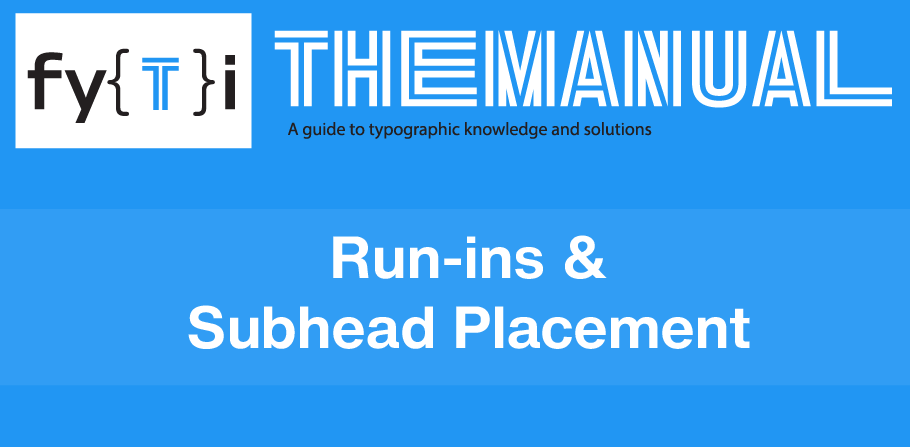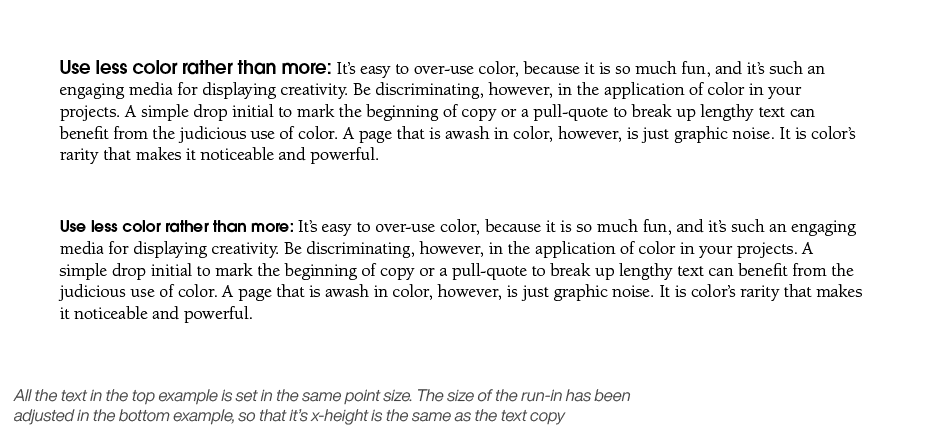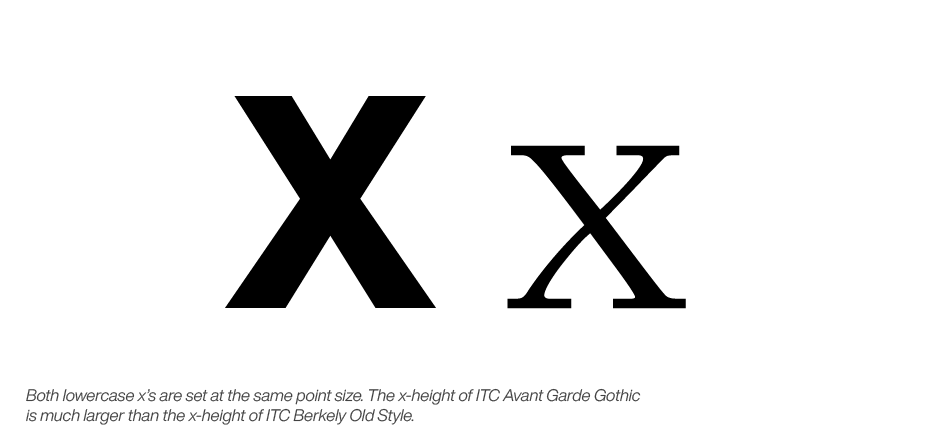Manual: Run-ins & Subhead Placement

Run-ins, commonly used for two or three level subheads, feature a word or phrase in a contrasting typeface. They can be an important hierarchal tool in long form textual content – and help to break information into bite-size chunks.
Run-ins should be set in a contrasting font to ensure they are perceived as something different from the main content. Sans serif run-ins often precede serif text. The potential problem is that sans serif fonts typically have a larger x-height than serif fonts, even at the same point size.
If not size adjusted, they can disrupt reading and confuse the reader. To prevent overwhelming nearby text, ensure the x-height of the run-in copy is the same size as the text.
To achieve a balanced typographic appearance, reduce the font size of the sans serif typeface. Optically matching x-heights usually requires only a slight adjustment of a couple of points. Some experimentation is necessary to find the optimal size, but the results are worthwhile.


Subheads are another way to create typographic hierarchy and break lengthy text into “snackable” blocks of copy.

Always ensure subheads are flanked by at least three lines of text for clarity. When a subhead stands alone at the top of a column, it risks being mistaken for a headline. Subheads introducing less than three lines of text at the bottom of a column may be easily missed and lead to reader confusion.
Small changes can make the difference between good typography and copy that confusing or hard to read.



















